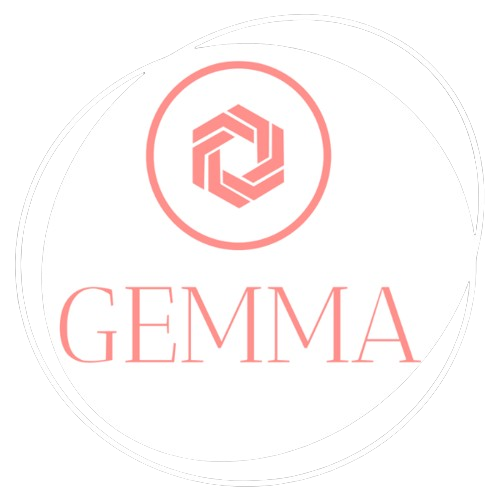WP3 – GEMMA MOOC design and implementation
PARTNERS’ CONTRIBUTION
UNIBA led the overall management and the MOOC design
Inscriptions to online platforms and applications were managed via a Google account: gemma.social.network@gmail.com
Various applications were used and integrated:
-Word
-PowerPoint
-VLC Media Player
-Text-to-speech: Voicemaker.in (with annual subscription)
-Moodle for the MOOC structure design
-Google Translate
-Youtube Video Channel
-YouTube Free Soundtrack Library
An initial version of the MOOCs lessons was realized in English using PowerPoint presentations, and each partner was responsible for one or two lessons, and for a final questionnaire for each lesson, as follows:
-Lesson 0 (Uniba)
-Lesson 1 and Lesson 2 (UVEG)
-Lesson 3 (IASIS)
-Lesson 4 (AMU)
-Lesson 5 (UTU)
-Lesson 6 (SFG)
Moreover, each module was accompanied by the production of scripts that were subsequently transformed into audio-scripts with the use of a text-to-speech application (Voicemaker.in) by choosing the language and the accent of the six languages involved.
Afterwards, each module was exported as a video and uploaded to a Moodle platform. To use the MOOC, a free “access as a guest” was designed; instead, all questionnaires were managed as Google Form documents to facilitate the data collection and analysis.
MAJOR DIFFERENCES WITH PLANNED ACTIVITIES
According to the project documentation, there were no major differences between the planned and the implemented activities within Work Package 3. All tasks were carried out as originally foreseen, including the design of the MOOC syllabus, the production and translation of contents and videos, the integration with the serious game, and the public presentation of the GEMMA platform. The timeline and objectives established in the project plan were fully respected, and the implementation followed the structure and methodology described in the original work plan.
QUALITY OF RESULTS
One Multilingual MOOOC was in line with what was stated in the proposal.
The results of Work Package 3 were achieved through a collaborative and iterative development process involving all project partners. The consortium followed the methodology which included defining the MOOC syllabus, creating multilingual learning materials, producing video lessons, and integrating the content with the GEMMA serious game. Regular coordination, feedback loops, and testing ensured consistency and pedagogical quality.
These results directly supported the main objectives of the GEMMA project—to strengthen digital, entrepreneurial, and well-being competences in higher education—by providing an open, accessible, and interactive learning resource for academic staff and students.
The quality of the results is demonstrated by the satisfaction surveys completed by students, which confirmed the high level of engagement, usability, and relevance of the MOOC and its learning activities.
TARGET GROUPS
The main target groups for the activities and results of Work Package 3 were higher education staff, including university teachers, researchers, and PhD candidates, as well as students interested in developing transversal competences. The GEMMA MOOC was designed to meet their needs for flexible, accessible, and practice-oriented learning in the areas of digital skills, entrepreneurship, and well-being at work.
For academic staff, the MOOC provided innovative training opportunities to improve their ability to teach, collaborate, and innovate in digital and hybrid environments. For PhD candidates and early-career researchers, it offered concrete tools to develop an entrepreneurial mindset and to manage stress, motivation, and work-life balance. For students, it enhanced employability and digital readiness through interactive, gamified learning experiences linked to real-life academic contexts.
Overall, the results of WP3 proved highly beneficial by promoting professional growth, self-awareness, and inclusion within higher education, directly contributing to the GEMMA project’s broader goal of empowering the academic community through digital transformation and well-being-oriented innovation.
PROGRESS, QUALITY AND ACHIEVEMENT OF RESULT
The level of achievement of both qualitative and quantitative indicators in Work Package 3 was fully satisfactory. All planned deliverables—design and implementation of the GEMMA MOOC, production of multilingual content, integration with the serious game, and public presentation of the platform—were successfully completed according to the timeline and quality standards described in the objectives_activities.pdf document.
Quantitative indicators included the number of modules developed, languages implemented, and participants enrolled in the MOOC. All targets were met, with participation levels even exceeding expectations during the pilot phase.
Qualitative indicators were measured through continuous monitoring of content quality, pedagogical coherence, and user satisfaction. The progress and quality of results were monitored through regular partner meetings, internal reviews, and structured evaluation procedures coordinated within the overall project management framework (WP1).
The student satisfaction survey, conducted via Google Forms, confirmed high levels of engagement, accessibility, and relevance of the MOOC content, validating the effectiveness and quality of the outputs in line with the project’s objectives.
CONCLUSION
The implementation of Work Package 3 was very successful. The partnership efficiently designed and delivered the GEMMA MOOC, producing high-quality, multilingual learning materials and integrating them with the serious game as planned. The coordination between partners and the use of clear methodologies ensured strong alignment with the project’s pedagogical objectives.
The slight reduction from a perfect score reflects the additional effort required for translations and technical adjustments across multiple languages and platforms. Despite this, all deliverables were completed on time, and the MOOC received excellent feedback from users through satisfaction surveys, confirming its quality and educational relevance.
